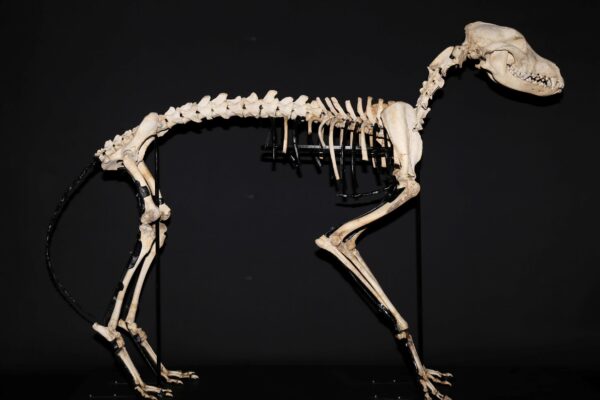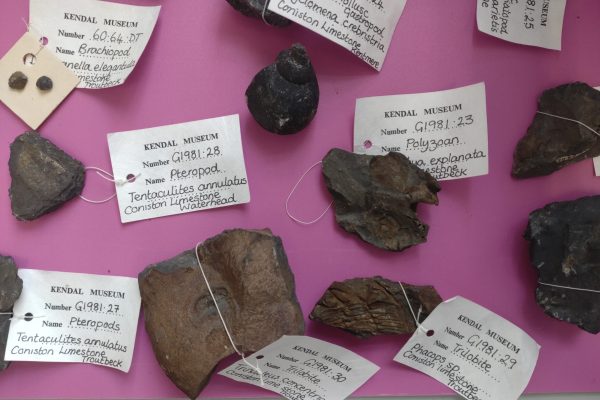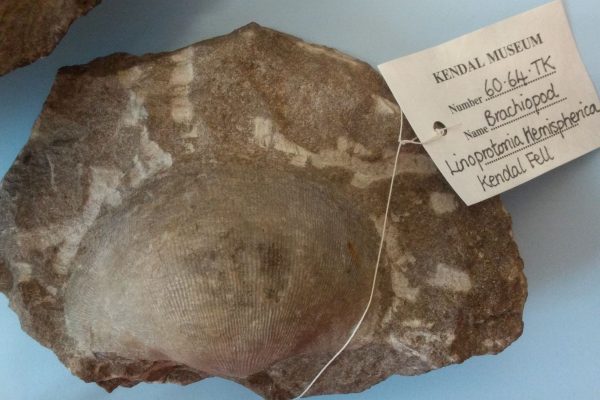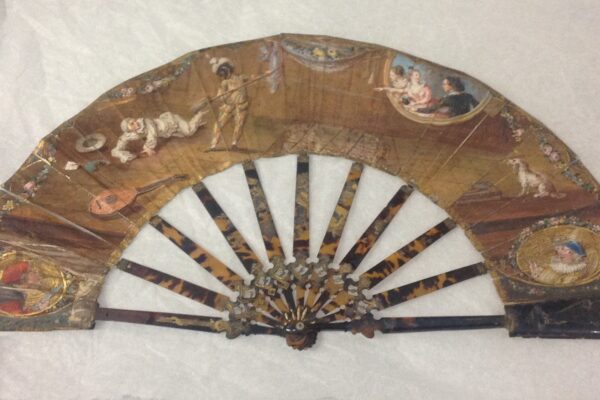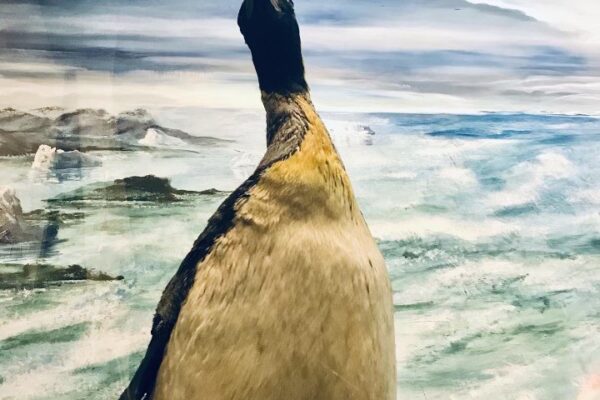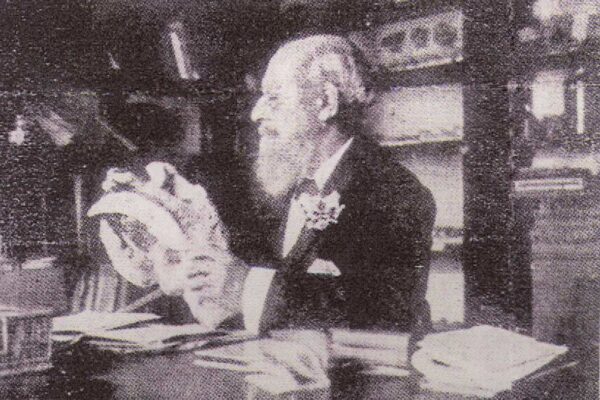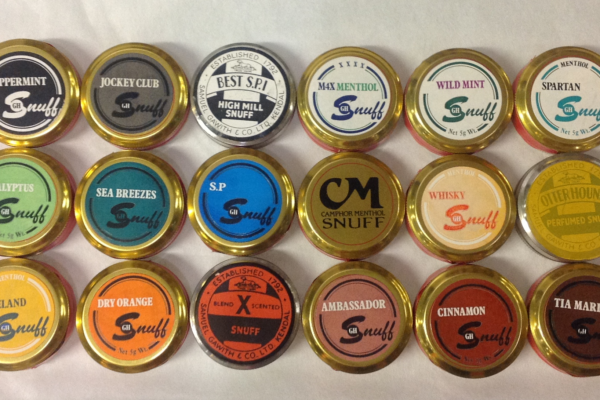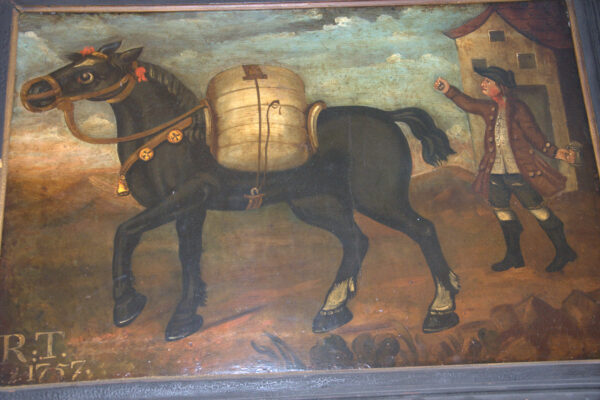Object of the Week: Helsfell Wolf
Kendal Museum’s Helsfell wolf skeleton was excavated in 1880 by John Beecham a local archaeology enthusiast who lived in Kendal. Beecham wanted the specimens he discovered to be placed in the care of Kendal Museum. The skeleton has been displayed in Kendal Museum for over 100 years. The Helsfell Wolf
Object of the Week: Mollusc and Graptolite
This week, our Curator of Collections, Carol Davies, talks about “Mollusc” and “Graptolite”. Mollusc Molluscs are a group of animals without backbones(invertebrates) that have an unsegmented body, often covered by a shell(exceptions include octopuses and squid). Most molluscs are marine animals that live in habitats from shallow coastal areas to deep
Object of the Week; Trilobite
This week, our Curator of Collections, Carol Davies, talks about “Trilobite”, prior to Geo Week 2022. Trilobite lived in marine waters. Some trilobites could swim, others borrowed or crawled around on muddy sea floors. The smallest trilobites were in cm or less in size. The largest trilobites were more than 70cm
Object of the Week: Brachiopods
This week, our Curator of Collections, Carol Davies, talks about Brachiopods. Brachiopods are benthic (bottom dwelling), marine (ocean), bivalves (having two shells). They are considered living fossils, with 3 orders present in today’s oceans. They are rare today but during the Palaeozoic era (248–545 million years ago), they dominated the
Object of the Week: Georgian Fans
Fans were a most desirable fashion accessory in Georgian times and depending on your wealth and status were made with ornate and indulgent materials such as tortoise shell, mother of pearl, gold and even ivory. Many fans would also have intricate scenes printed on the fabric, which would be revealed
Object of the Week: Silver Short Cross Pennies
This week our curator, Morag Clement, talks about “Thirty Four Silver Short Cross Pennies”. The coins were found near Carnforth in 2008 by a local metal detectorist. After examination at the British Museum, they were declared Treasure Trove and Kendal Museum was given the option to purchase them. A value
Object of the Week: King Penguin
Our King Penguin specimen was part of the original natural history collection at Kendal Museum, and was donated by Dr William Rushton Parker (1853–1943). Dr William Rushton Parker; Kendal’s Great Benefactor Dr Parker was a Museum supporter with a particular interest in the collection of Birds, not only from this
Object of the Week: Sabre Toothed Tiger
This specimen is a Victorian cast of a sabre toothed tiger found in Brazil as a cave deposit. Even as a plaster cast is it very valuable as a museum specimen, coming from the Victorian age when such casts commanded great interest. It was originally in the Sessions collection. The Sessions
Object of the Week: Snuff
This week our curator, Morag Clement, talks about ‘Snuff’. Snuff is essentially dried tobacco leaves ground into powder which is sniffed into nostrils as an alternative to smoking tobacco. A pinch of snuff is placed on the back of the hand and sniffed, the word “sniff” imitating the sound of
Object of the Week: The Bell Mare Painting
This week our curator, Morag Clement, talks about ‘Bell Mare Painting’. The Belle Mare painting dates from 1757 and is oil on canvas. The initial R.T are thought to refer to Robert Tebay who was a packhorse carrier at this time in the Kendal area. The painting was on display


